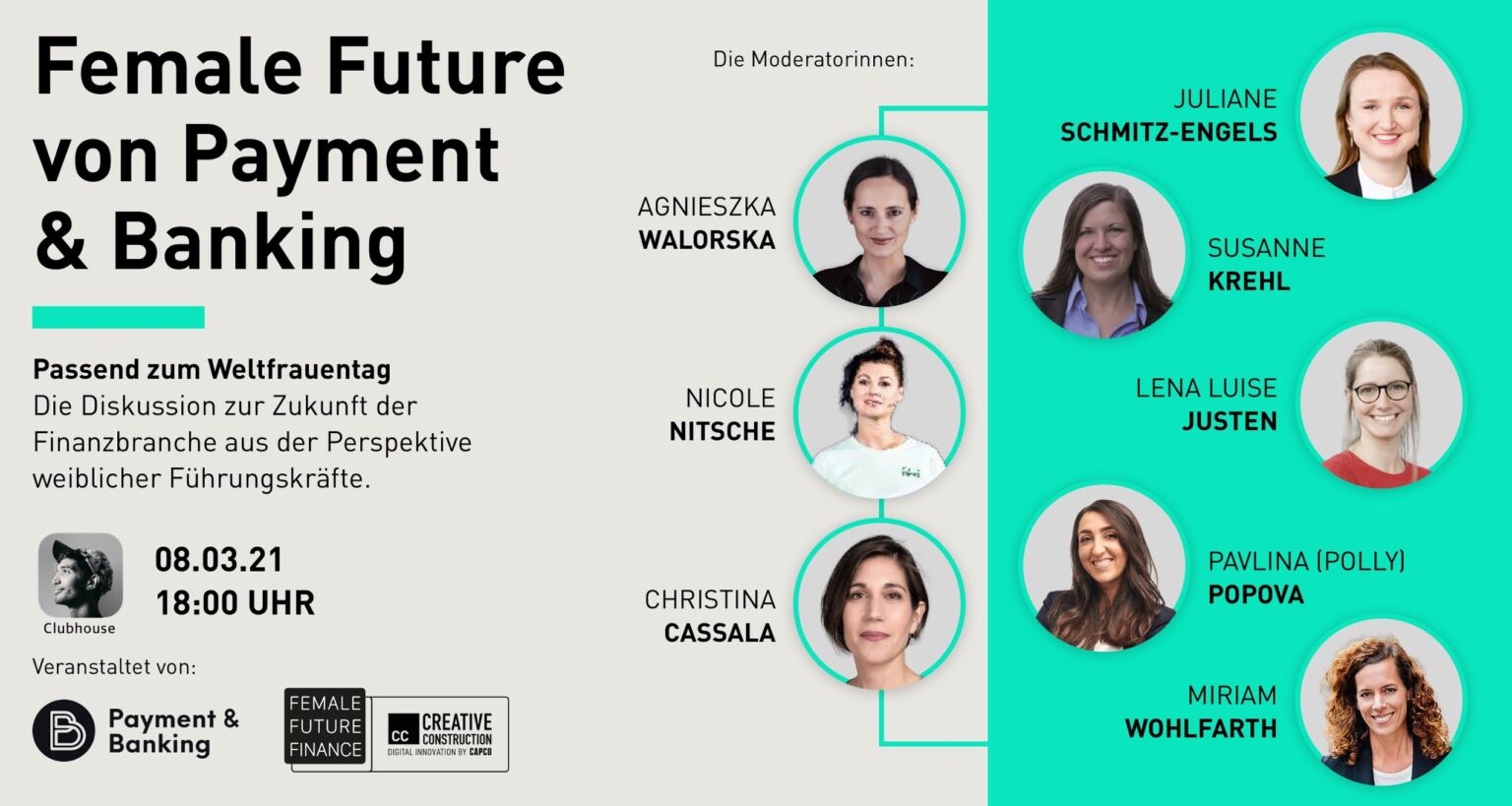The number of women in the top echelons of the financial industry is on the rise. But there is still no real equality of opportunity. How can female leaders help to better target women? On International Women’s Day, we will be discussing the future of the finance industry from the perspective of female executives in a Clubhouse session themed: #choosetochallenge.
When International Women’s Day was established at the beginning of the 20th century, the main issue, apart from general equality, was the right of women to vote. More than 100 years later, women are dealing with very different challenges. Even after a hundred years, one thing is clear: if you want to achieve something and change the world, you have to be political – and not just on International Women’s Day. Political, in this case, means standing up for inequality or injustice, standing up for issues, developing a voice, and trying to establish lived change. This is not a fact that exclusively concerns our industry, but it is also a fact.
The financial sector is not a classic male industry, but it is still very traditionally structured. About as many women as men work here. But if you look up the career ladder, you find fewer and fewer women. Of course, unequal pay and lack of women in leadership positions are related. But why is this so virulent here in particular?
Not only because of stereotypical gender attributions, but also because of the still often socially and structurally unequal redistribution of care work, many women, even in the financial sector, fall by the wayside at some point in their careers. From 2015 to 2018, little or nothing happened at Germany’s 100 largest banks in terms of the proportion of women on management boards. In 2019, however, the German Institute for Economic Research (DIW) in Berlin noted an increase of 1.1 percent. The share is now 9.8 percent. Like last year, only five of the 100 largest banks have female CEOs in 2019.

Despite the positive trend, much work remains to be done on gender equality.
So far, the industry’s supervisory boards have been a bright spot, with the proportion of women here comparatively high – but the proportion of women on the supervisory boards of the 100 largest banks remained unchanged in 2019 compared with the previous year, at around 23 per cent.
So the industry definitely has a masculine “feel” to it and this is where people like to stick to the old ways. But improvement is in sight: many banks have put gender and diversity at the top of their agendas. After sustainability and process optimization and…
Despite the positive trend that is emerging, much work remains to be done on gender equality. Because it must not remain with a well-intentioned approach, just because one has written the topic on the agenda. It’s not about figuratively giving women a share of the pie, but if you do it right, you give them a share of the bakery.
The current political efforts to introduce a statutory quota for women in listed companies are long overdue. But the implementation still far too erratic and insufficiently regulated. Companies are required to disclose an effort to staff their management floors with women, but there is no penalty for non-compliance. But actually it is relatively simple: The important metric in the economy, and therefore in the management floors and especially in the management floors of the financial sector – is still money. And then you just have to tie diversity and women’s advancement to the issue of money and make sure that if you don’t change in that regard, it hurts.
The war of talents must be conducted in a diverse manner

The latest figures show a shift in mindset, with the industry making progress by focusing more on its female employees as a key stakeholder group. A holistic view of women is needed among customers, employees, shareholders and all stakeholders, and a diverse workforce should also be a business imperative. If this is not a top priority, entire industries will lose the war for talent. After all, it is in the war of talent that women are becoming increasingly important. Yet today, they mostly take on leadership roles within their respective organizations…. However, they are clearly underrepresented at the top of management bodies. Women hold only six percent of CEO positions worldwide. The situation is hardly better on supervisory boards. Only nine percent of the executive chairs here are occupied by female experts. But how can we have a first-class workforce if we don’t include 50 percent of the population?
With women in top positions, companies could in any case gain a better understanding of the female target group, as many studies have shown. Gender diversity should be recognised as a strategic issue that primarily impacts business results. There is more creativity and commitment to attracting, recruiting and retaining women. At least the diagnosis of the problem is clear: the financial sector urgently needs more women, especially in management positions. Not only because equality in the workplace should be a matter of course, but also because it is now almost common knowledge that mixed teams achieve better results than uniform groups whose members have, in case of doubt, studied the same subjects at the same universities and have made a career in the same companies.
Diversity in the workplace is not only a matter of equity, but also of business success. When in doubt, a more diverse mix at least helps prevent boredom on the job, and that’s a value in itself.
Many banks are already increasingly looking for top female staff. So pessimism is not appropriate and is anything but productive on this subject. Because only when you believe you can make a difference will you try. And banks do try – but it takes time when structures have been established over decades.
Female leaders want to change what?
Some questions I ask myself on International Women’s Day are: Who are we and what is my personal challenge? The answer I can only give myself. What ideas, desires, demands do I allow to come to me? What impact do my actions have, what responsibility do I have, and how can my actions make a lasting difference?
To find answers, women should share. It needs sustainable networks and the courage to use them. Because they help us women to understand each other better and to support each other. What is needed is a change in thinking, a new design perspective and an open mindset in the distribution of entrepreneurial opportunities.
Join us today at 6pm as we talk about the future of finance from the perspective of female leaders and try to share our personal and professional experiences with you.
Including:
- Agnieszka Maria Walorska, Founder at CREATIVE CONSTRUCTION & Executive Director at Capco
- Nicole Nitsche, Head of Content, Marketing, Communications & Events at Payment & Banking
- Christina Cassala, Head of Content at Payment & Banking, business journalist, book author
- Lena Luise Justen, FinTech entrepreneur, co-founder Fino’
- Susanne Krehl, Founder (FinTech in Sealth mode), ex Barzahlen
- Pavlina Popova, Project Lead Digital Payments, DSGV
- Juliane Schmitz-Engels, Head of Communications, Mastercard
- Miriam Wohlfarth, Founder Ratepay and Banxware

This is a joint event between Payment & Banking and Female Future Finance Podcast. The event takes place at Clubhouse
https://www.linkedin.com/events/femalefuturevonpayment-banking6772072128561860608/
